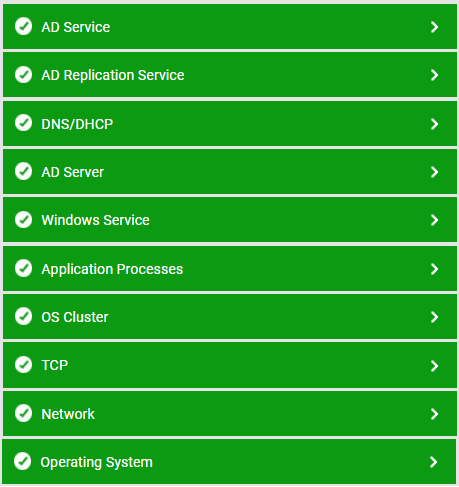Monitoring Active Directory Servers
The eG Enterprise provides extensive monitoring support to the Active Directory (AD) server operating on Windows 2000, 2003, and 2008/2012. The specialized monitoring model that the eG Enterprise offers (see Figure 1) periodically executes a number of tests on the AD server to extract a wide gamut of metrics indicating the availability, responsiveness, and overall health of the AD server and its underlying operating system. Using this model, Active Directory servers can be monitored in an agent-based or an agentless manner.

Figure 1 : Layer model for Active Directory
Using these metrics, an administrator can find quick answers to the following performance queries:
- Is the AD server available?
- How quickly is the server responding to user requests?
- Are there adequate work items to service blocking requests, or are too many requests getting rejected?
- Have any internal server errors been reported recently?
- Have too many login attempts failed?
- Did session timeouts occur too frequently?
- Is the schema cache effectively utilized, or is disk read/write activity high?
- Is the server currently overloaded? Are sufficient domain controllers available in the environment to handle the load?
- Are all changes to the AD server getting replicated across and within sites?
- How many directory synchronizations are in queue? Is the number high enough to force a replication?
The last 5 layers of Figure 1 have been discussed in the Monitoring Unix and Windows Servers document, and will hence not be discussed again. However, for the Active Directory server alone, the Operating System layer is mapped to an additional Net Logon test. The section that follows will discuss this test in detail. All other sections in this chapter will focus only on the top 3 layers of Figure 1.